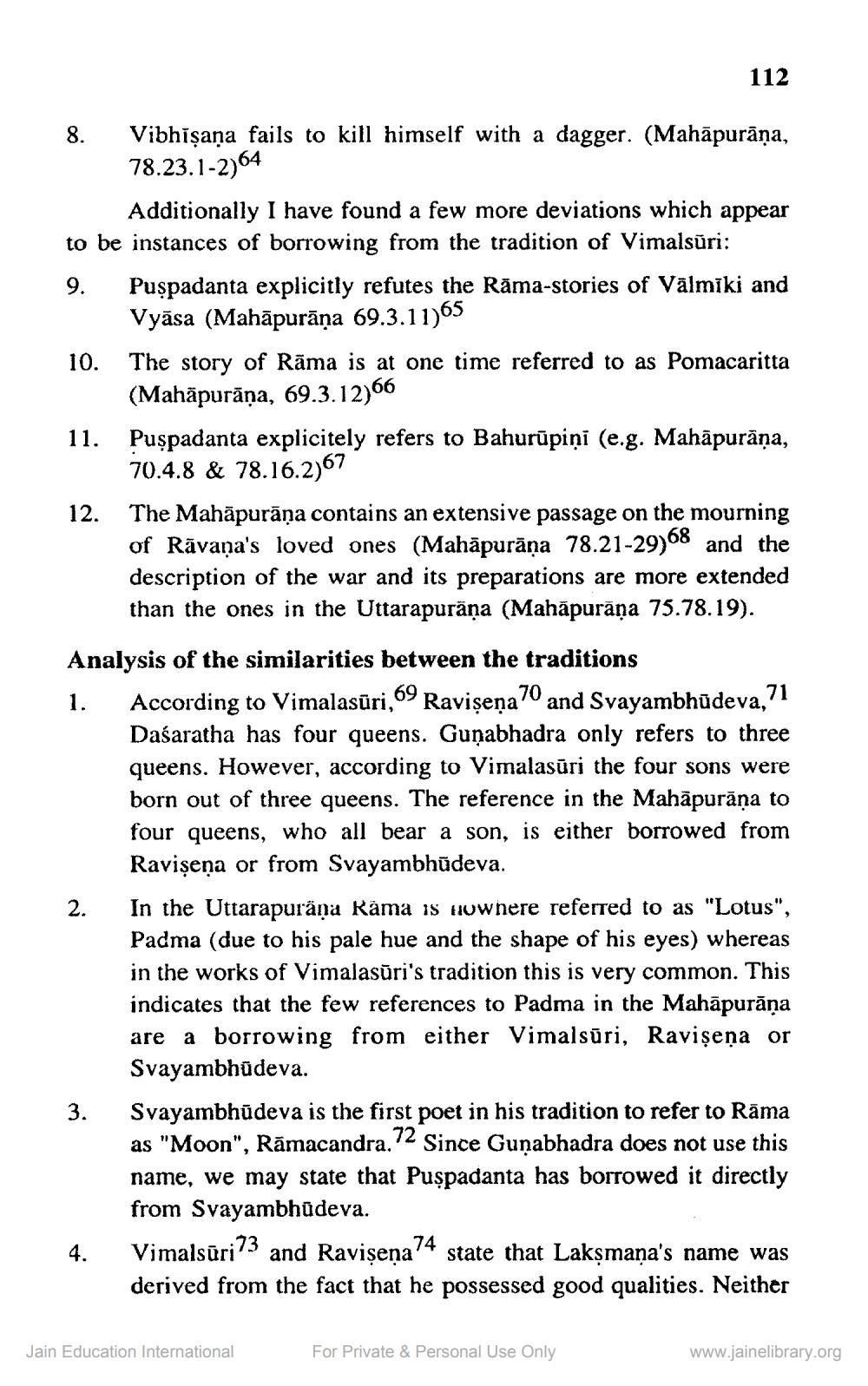________________
8.
10.
Additionally I have found a few more deviations which appear to be instances of borrowing from the tradition of Vimalsūri:
9.
11.
1.
2.
3.
Vibhiṣaṇa fails to kill himself with a dagger. (Mahāpurāṇa, 78.23.1-2)64
4.
112
12. The Mahāpurāṇa contains an extensive passage on the mourning of Rāvaṇa's loved ones (Mahāpurāṇa 78.21-29)68 and the description of the war and its preparations are more extended than the ones in the Uttarapurāṇa (Mahāpurāņa 75.78.19). Analysis of the similarities between the traditions
71
According to Vimalasūri, 69 Raviṣeṇa70 and Svayambhudeva,7 Dasaratha has four queens. Guṇabhadra only refers to three queens. However, according to Vimalasūri the four sons were born out of three queens. The reference in the Mahāpurāṇa to four queens, who all bear a son, is either borrowed from Ravişena or from Svayambhudeva.
Puspadanta explicitly refutes the Rama-stories of Valmiki and Vyāsa (Mahāpurāņa 69.3.11)65
The story of Rama is at one time referred to as Pomacaritta (Mahāpurāṇa, 69.3.12)66
Puspadanta explicitely refers to Bahurūpiņi (e.g. Mahāpurāṇa, 70.4.8 & 78.16.2)67
In the Uttarapuraṇa Rama is nowhere referred to as "Lotus", Padma (due to his pale hue and the shape of his eyes) whereas in the works of Vimalasuri's tradition this is very common. This indicates that the few references to Padma in the Mahāpurāṇa are a borrowing from either Vimalsūri, Ravisena or Svayambhudeva.
Svayambhudeva is the first poet in his tradition to refer to Rāma as "Moon", Rāmacandra.72 Since Gunabhadra does not use this name, we may state that Puspadanta has borrowed it directly from Svayambhudeva.
:73
Vimalsūri and Ravişena' 74 state that Lakṣmaṇa's name was derived from the fact that he possessed good qualities. Neither
Jain Education International
For Private & Personal Use Only
www.jainelibrary.org




